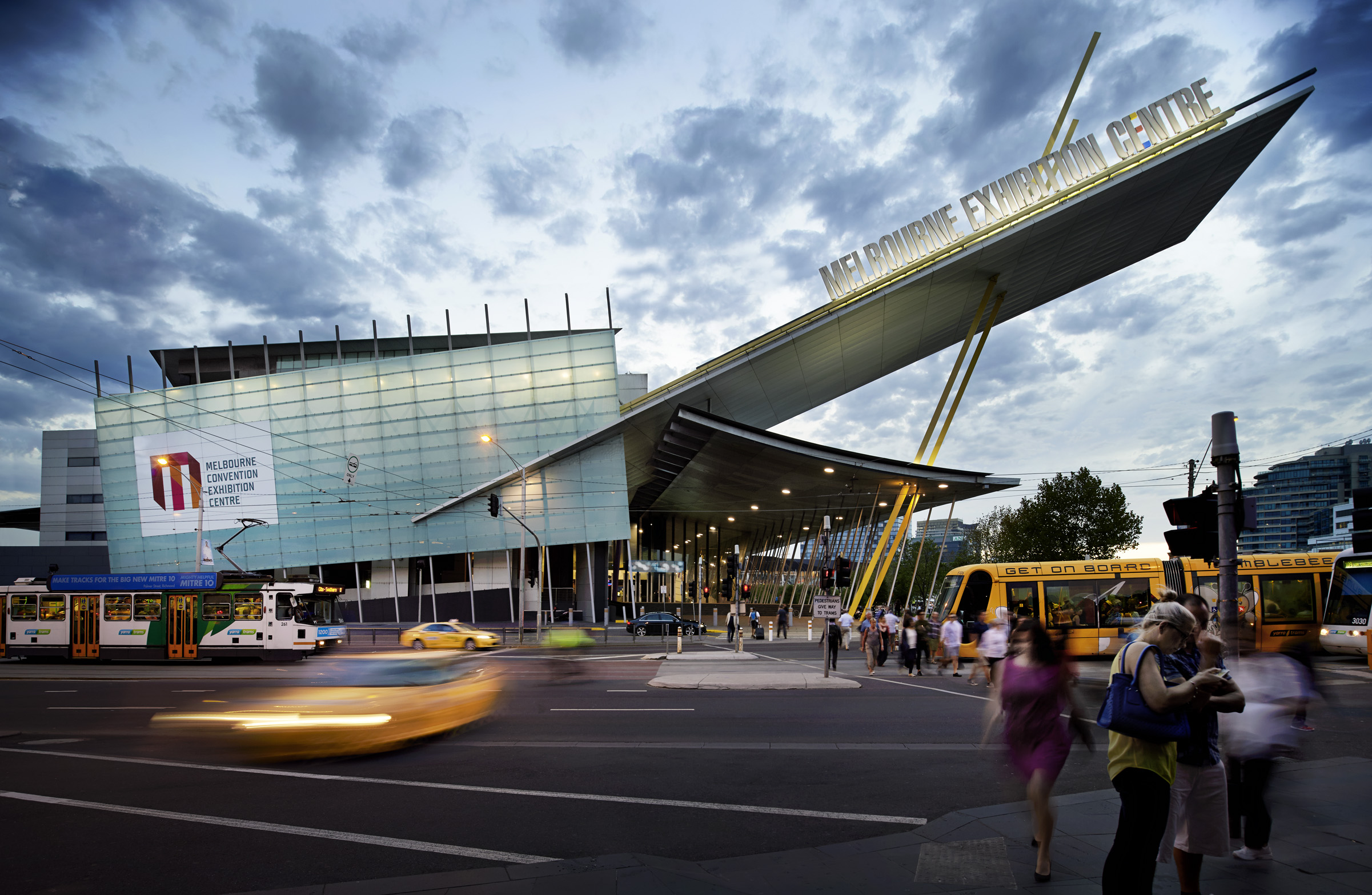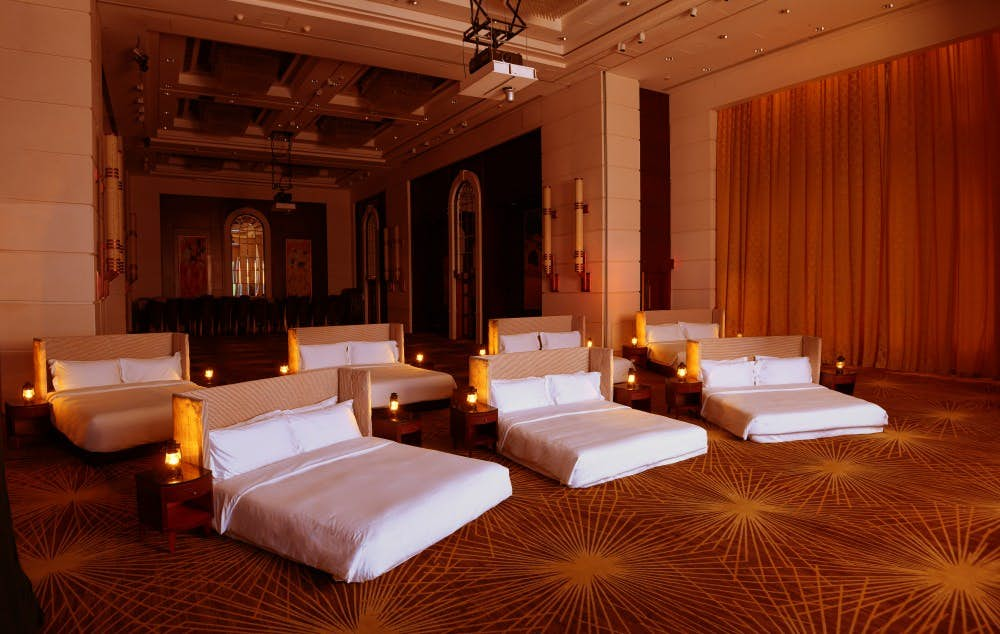
Giving planners the tools to make their meeting content more interactive, engaging and inspiring was the aim of the Mix panel discussion at this year’s ITB Asia in Singapore. Expertly moderated by Ray Bigger, founder of management consultancy Think 8, the event invited four industry specialists to demonstrate why their particular field of expertise was the most vital in information delivery.
The meeting and event components in question were: icebreaker activities; the merits and pitfalls of technology; the importance of the keynote speaker; and memorable coffee breaks. These topics were discussed, respectively, by Team Building Asia’s co-founder & managing director, Stuart Harris; Ben Fox, general manager of Turning Point Solutions; Andrew Chan, founder and CEO of ACI HR solutions and the very entertaining John Mims, SVP worldwide sales and resort marketing Asia, Las Vegas Sands Corporation.
Building banter
Team building is a fun way to break up and eliminate any risk of monotony in your meeting, explained Stuart Harris of Team Building Asia. By way of demonstration, Harris invited the audience to participate in a two-minute icebreaker game, injecting a refreshing dynamic to the point he was making.
As an example, Harris spoke of a team building exercise that involved making a movie – either as a memento or integral part of the activity. An essential component of the activity is breaking down barriers that may exist, particularly between those in a senior position and their team members. With a sample “mission impossible” video on hand to demonstrate, Harris said: “Preparing a themed video beforehand with instructions can inject fun into a conference. The impact of a movie made by key members of staff can be comical and the message contained within it can be quite long-lasting.”
Harris also explained that team-building activities can be one of the most cost- effective ways of communicating key corporate messages. He said: “If you don’t have the budget to go offsite, you can certainly deliver something in the office. We’ve even done team building activities in lift lobbies because there wasn’t enough space elsewhere.”
To tech or not to tech
Presenting the case for technology, Ben Fox, general manager of Turning Point Solutions said: “People are intimidated by technology – they are scared of it not working – and the expense.”
Fox used smartphone apps as an example, explaining that they can enhance the experience for a participant, helping to engage them before and after an event. According to Fox, on the whole, however, these tools remain relatively under-utilised.
He said: “Technology can help pull people towards your message, enabling them to find and interact with client messages on their own terms.”
An example he cited was a recent Formula 1 event held in Singapore. Guests were able to pose for photographs against a green screen and an image of the driver, Jenson Button, was overlaid to look like the participant had posed with the star. The image was automatically posted onto Facebook with the caption “Johnnie Walker driving responsibly”. The activity delivered the message to a much wider digital audience than the on-the-ground interaction.
Although a supporter of technology, Fox also outlined his support of KISS– “Keep It Simple Stupid”. “Don’t just use technology for technology’s sake,” he said. “Sometimes a paper and pencil is just as good.”
Key ingredient
Andrew Chan, founder and CEO of ACI HR drew on his events experience to explain the value of a good keynote speaker. He said: “We once arranged a lawyer to come in and talk about the drafting of wills. As morbid as that sounds, and as worried as we were about it on the committee, everyone actually came out of that luncheon with something.” While participants may not have literally made a will following the seminar, they nevertheless retained a great deal of useful information on a sensitive, infrequently discussed subject. Chan put this down to the power of delivery by the speaker.
Chan explained that speakers don’t have to be expensive. His tips for selecting a good keynote speaker are: have a committee, vet the speaker beforehand, and look outside your industry and comfort zone. He cited a recent networking event he organised when he secured one of Singapore’s top comedians, Kumar, and attendance increased by 150 per cent.
When asked whether this might overshadow the message of the event by an audience member, Chan replied: “From a marketing perspective the keynote speaker can drive awareness and numbers and leave participants with something a little bit more.”
Break the norm

Championing the value of a coffee break, John Mims, SVP worldwide sales and resort marketing Asia, Las Vegas Sands Corporation, said: “Coffee breaks are a great opportunity for networking. They’re also a chance to have fun and make people smile. If people have fun and remember the content, they will come back next year.”
He suggested organising coffee breaks with a twist, such as a buffet of candy, an ice bar or getting performers involved. Making music a theme was also discussed, since having another type of auditory stimulation helps the mind concentrate later. He also suggested having a refreshing alfresco coffee break, or hosting it in an interesting venue with a view or great history.
To keep budgets down, Sims suggested getting sponsors financially involved in your coffee break to defer the cost to them.
Take away
With the floor open to questions from the audience, one member hit the nail on the head, saying: “I think there’s a lot of power in being a little bit bold when you are organising a meeting and events, and going with it because most people I think are delighted when something different happens, and it doesn’t have to be massive, but it just has to be slightly different and engaging and I think that’s what will make all the difference, but you have to plan for it and try it.”
Moderator Bigger closed the seminar with the ever-appropriate Carl W. Buechner quote: “They may forget what you said, but they will never forget how you made them feel.”


